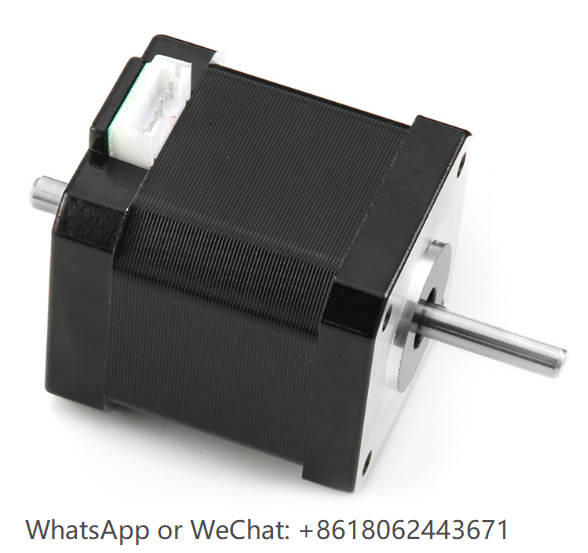1. The subdivision technology of the stepper motor is essentially an electronic damping technology, the main purpose of which is to weaken or eliminate the low-frequency vibration of the stepper motor, and improving the running accuracy of the motor is only an incidental function of the subdivision technology. The actual step angle when the motor is running after subdivision is a fraction of the basic step angle.
2. The basic step angle of the two-phase stepper motor is 1.8°, that is, a pulse goes 1.8°, if there is no subdivision, it is 200 pulses to go a circle 360°, the subdivision is generated by the drive by accurately controlling the phase current of the motor, and has nothing to do with the motor.
3. If it is 10 subdivisions, it comes from a pulse motor to go 0.18 °, that is, 2000 pulses to go 360 °, whether the accuracy of the motor can reach or approach 0.18 °, but also depends on the subdivision current control accuracy of the subdivision driver and other factors.
Stepper motor subdivision drive technology

42 series stepping motor - NEMA 17 stepper motor with double shaft
Stepper motor subdivision drive technology is a drive control technology developed in the mid-seventies that can significantly improve the comprehensive performance of stepper motors.
It is by controlling the current in the windings of each phase to make them rise or fall according to a certain law, that is, a plurality of stable intermediate current states are formed between zero current and maximum current, and the direction of the corresponding synthetic magnetic field vector will also have a plurality of stable intermediate states, and rotate according to the subdivision step.
Among them, the amplitude of the synthetic magnetic field vector determines the size of the rotational torque of the stepper motor, and the direction of the synthetic magnetic field vector determines the size of the step angle after subdivision. The subdivision drive technology further improves the angle accuracy and running smoothness of the stepper motor.